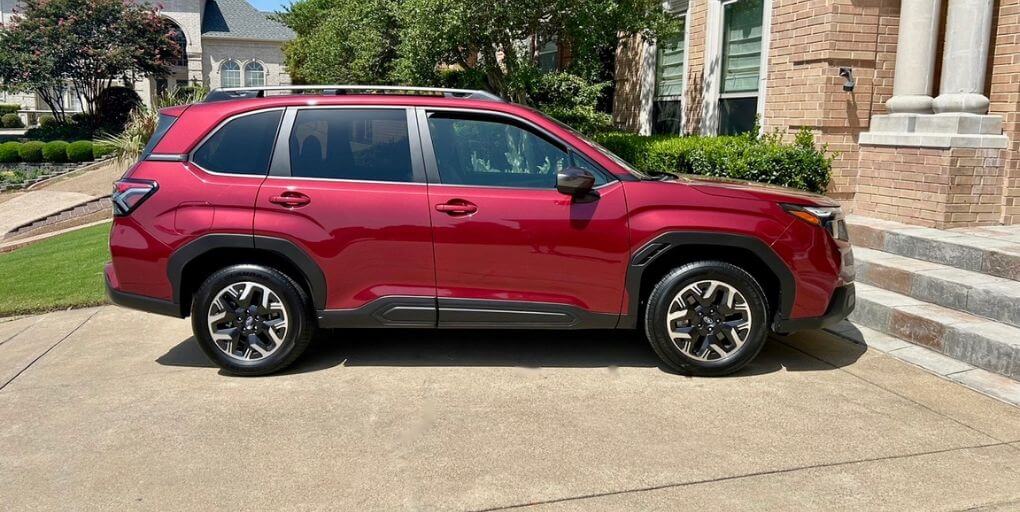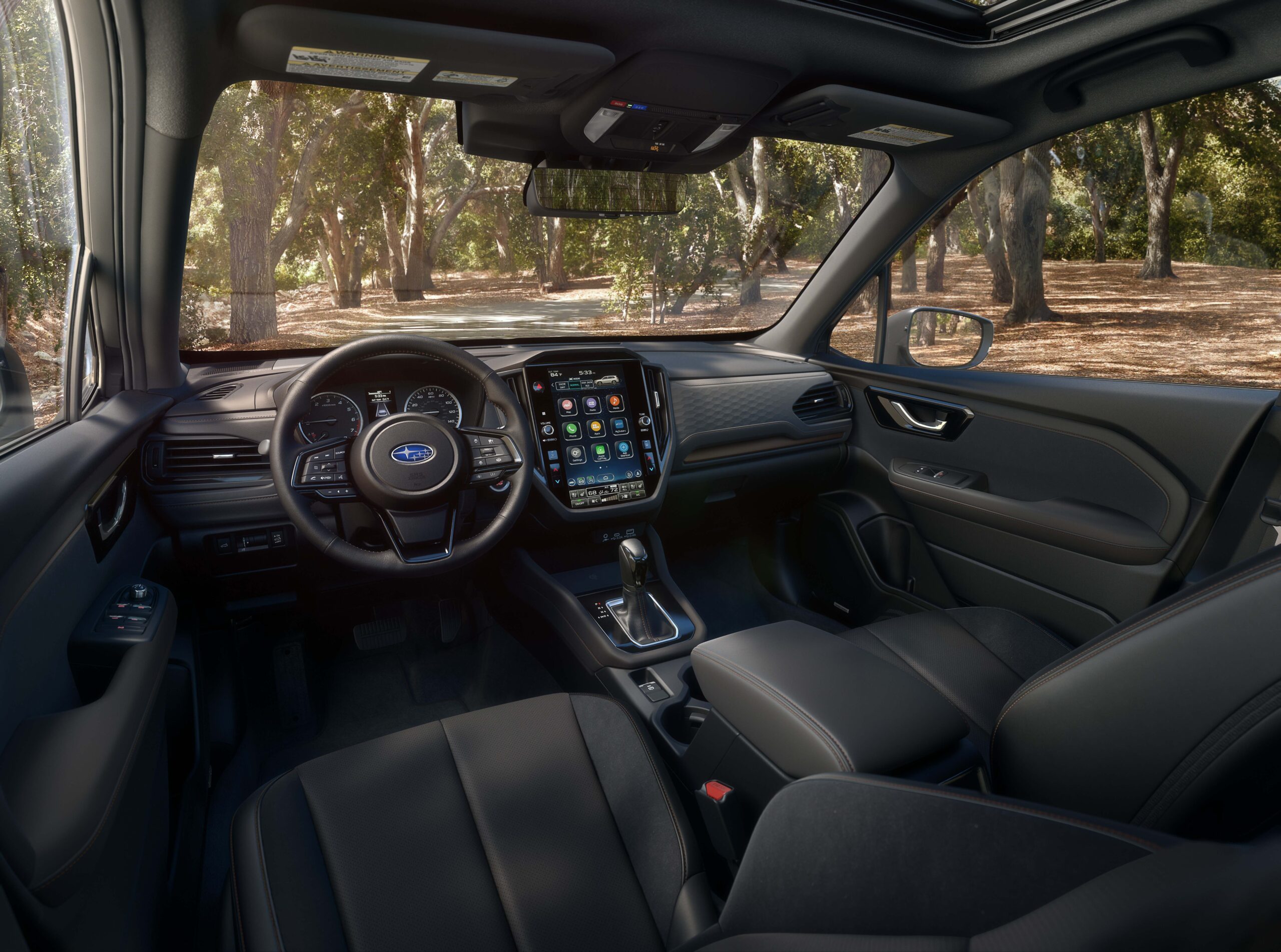The 2025 Subaru Forester has officially landed in Australia, bringing a refreshed design, advanced technology, and a significant upgrade to its hybrid powertrain. However, with these enhancements comes a notable price increase of up to $5850 compared to the previous generation, as reported by recent Australian automotive news.
This sixth-generation mid-size SUV, unveiled at the 2025 Melbourne Motor Show, aims to compete with top-selling rivals like the Toyota RAV4, Mitsubishi Outlander, and Mazda CX-5. With a bold new look, improved safety features, and a Toyota-derived “strong hybrid” system, the Forester is poised to maintain its loyal following despite the higher cost. This article dives into the details of the price hike, specifications, features, and what it means for Australian buyers.
Why the Price Hike?
The 2025 Subaru Forester’s price increase is attributed to several factors, including a new body design, enhanced technology, and a more sophisticated hybrid powertrain. According to industry sources, the additional standard equipment across the range helps offset the cost, making the SUV more competitive in the crowded mid-size SUV market. The inclusion of advanced safety features, a larger infotainment system, and improved fuel efficiency in the hybrid models justifies the premium, but it may still raise eyebrows for budget-conscious buyers.
Breakdown of the Price Increase

The new Forester lineup comprises seven variants: four petrol-only models (Forester, Forester Premium, Forester Sport, and Forester Touring) and three hybrid variants (Forester Hybrid, Forester Hybrid Sport, and Forester Hybrid Touring). Pricing starts at $43,490 before on-road costs for the base petrol model, while the hybrid range begins at $46,490. The top-of-the-range Forester Hybrid Touring now exceeds $60,000 drive-away, a significant jump from the previous generation’s top-tier model, which retailed for around $54,000 drive-away. This $5850 increase for the flagship model reflects the addition of premium features and the new hybrid system.
Comparison with Competitors
To put the price hike into perspective, the Toyota RAV4, Australia’s top-selling mid-size SUV, starts at $42,260 plus on-road costs. The Forester’s base price is now closer to the RAV4’s, but Subaru’s Symmetrical All-Wheel Drive system and off-road capabilities give it an edge for adventure-seekers. Similarly, the Mitsubishi Outlander and Mazda CX-5 offer competitive pricing, but the Forester’s hybrid system, with its impressive 1000km-plus range per tank, sets it apart in terms of efficiency and practicality.
New Features and Technology
The 2025 Forester introduces a host of upgrades that enhance its appeal. Subaru has focused on refining the driving experience, improving safety, and integrating modern technology to meet the demands of today’s buyers.
Advanced Safety Features
All Forester variants come equipped with Subaru’s latest EyeSight® Driver Assist system, featuring a wide-angle camera, an emergency driving stop function, and nine airbags. The system now includes a three-camera setup for improved active safety, such as detecting pedestrians and cyclists more effectively. Additional features like Subaru Vision Assist and a Driver Monitoring System ensure the Forester remains one of the safest SUVs in its class. However, Australian models will miss out on the “world’s first” cyclist airbag, which is available in other markets.
Infotainment and Interior Upgrades
A standout feature of the 2025 Forester is the 11.6-inch portrait touchscreen, standard across all variants, offering wireless Apple CarPlay and Android Auto. Premium and higher trims include built-in satellite navigation, while the Sport Hybrid and Touring Hybrid models feature a 12.3-inch digital driver display and a 360° Surround View Monitor. The audio system has also been upgraded, with most models featuring a six-speaker setup and top-tier variants boasting a 10-speaker Harman Kardon premium stereo.
Hybrid Powertrain: A Game-Changer
The most significant update is the new “strong hybrid” e-Boxer system, which combines a 2.5-litre Boxer four-cylinder petrol engine (121kW/212Nm) with a 90kW electric motor and a 1.1kWh lithium-ion battery. This Toyota-sourced hybrid technology delivers a combined output of 145kW, a marked improvement over the previous mild-hybrid system’s 12kW electric motor. The hybrid achieves a fuel economy of 6.2L/100km, compared to the petrol model’s 7.9L/100km, offering a 30% improvement in city driving conditions. Subaru claims the hybrid can travel over 1000km on a single tank, making it ideal for long-distance Australian adventures.
Petrol Engine and Performance

For those opting for the non-hybrid variants, the 2.5-litre petrol engine has been refined to produce 136kW at 5800rpm and 247Nm at 3700rpm. While this is slightly less powerful than the RAV4’s 163kW, the Forester’s Lineartronic CVT and Symmetrical All-Wheel Drive system ensure smooth and responsive handling. The petrol models maintain a full-size 18-inch spare wheel, while hybrid variants come with a tyre repair kit, with an optional towbar-mounted spare wheel solution available as a dealer accessory due to customer feedback.
Off-Road Capability and Wilderness Speculation
Subaru’s Symmetrical All-Wheel Drive and X-Mode off-road assist system remain core to the Forester’s identity, offering 220mm of ground clearance across all variants. The newly tuned suspension and steering enhance both on-road comfort and off-road control. While the standard models are well-suited for light off-roading, the off-road-focused Wilderness variant, available in the US with 236mm ground clearance, all-terrain tyres, and rugged bumpers, has not been confirmed for Australia. However, Subaru Australia has hinted at the possibility of introducing Wilderness models, which could appeal to buyers seeking a more rugged SUV.
Market Positioning and Challenges
The Forester’s price hike positions it as a premium option in the mid-size SUV segment, but it faces stiff competition. The Toyota RAV4 dominates sales, outselling the Forester three to one in the first quarter of 2025. The Mazda CX-5, with its sleek design and turbo-petrol option, and emerging Chinese brands like Haval H6, with aggressive pricing, add pressure. Subaru’s loyal customer base, with over 70% repeat buyers, and its reputation for reliability and capability will be crucial in maintaining market share.
Resale Value and Long-Term Appeal
Despite the price increase, the Forester remains a strong contender for resale value. According to data analytics, the 2020 Forester retains 69.3% of its original value compared to the 2024 model, making it one of the best in its class. This durability, combined with Subaru’s focus on safety and all-terrain capability, ensures the Forester remains a practical choice for families and adventure enthusiasts.
What’s Next for the Forester?
With deliveries set to begin in July 2025, Subaru Australia has opened pre-orders, allowing buyers to secure their vehicles through local retailers or the Subaru website. The brand is also exploring the introduction of the Wilderness trim and further hybrid advancements, potentially aligning with the Crosstrek’s midlife facelift in late 2025 or early 2026. As Subaru celebrates 50 years in Australia, the Forester remains a cornerstone of its lineup, blending heritage with modern innovation.
FAQs
What is the starting price of the 2025 Subaru Forester in Australia?
The 2025 Subaru Forester starts at $43,490 before on-road costs for the base petrol model, with the hybrid range beginning at $46,490.
How much more efficient is the new Forester Hybrid compared to the petrol model?
The hybrid achieves 6.2L/100km, a 30% improvement in city driving over the petrol model’s 7.9L/100km, with a range exceeding 1000km per tank.
Does the 2025 Forester Hybrid come with a spare wheel?
The hybrid variants include a tyre repair kit, but a towbar-mounted spare wheel is available as a dealer accessory.

